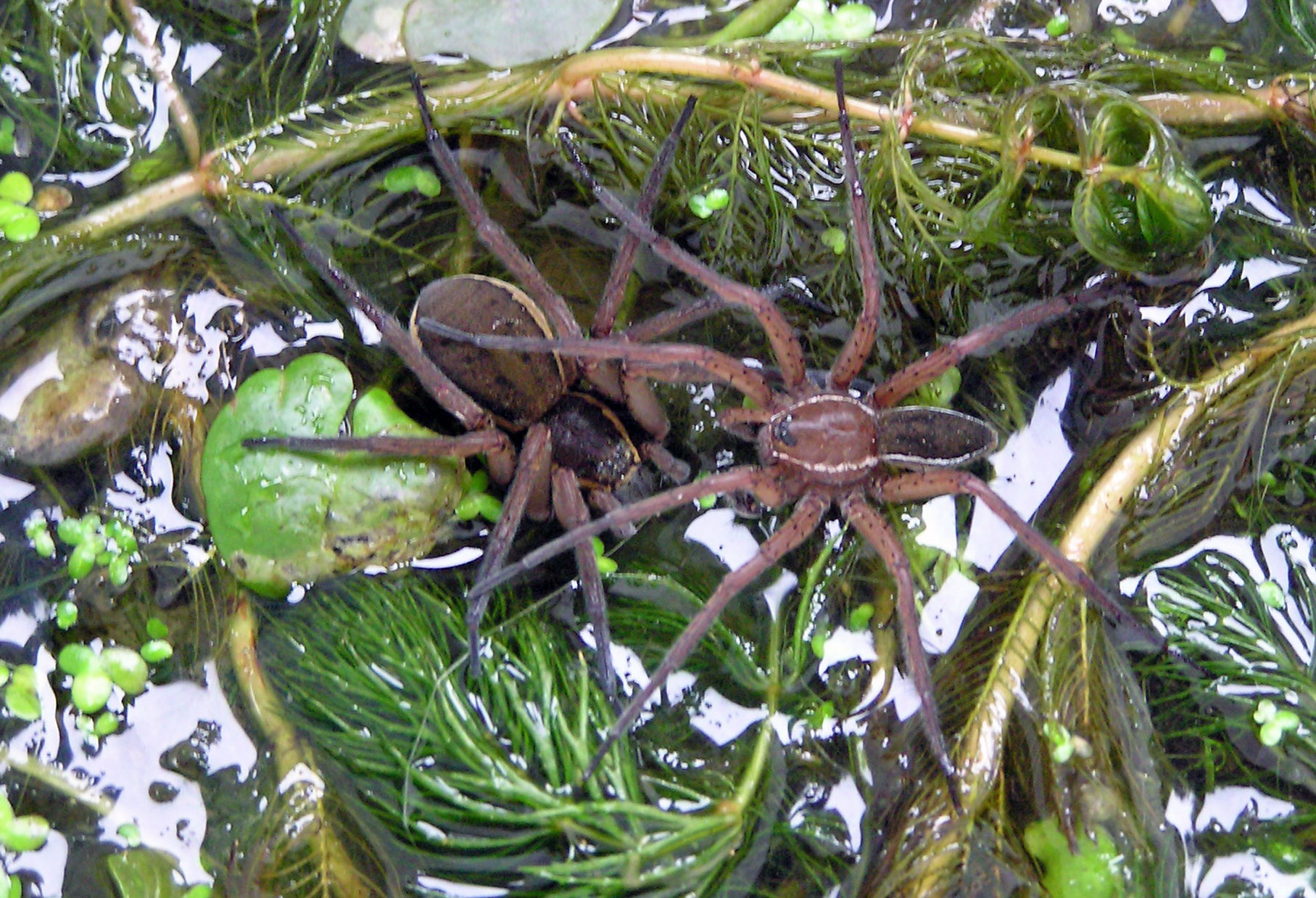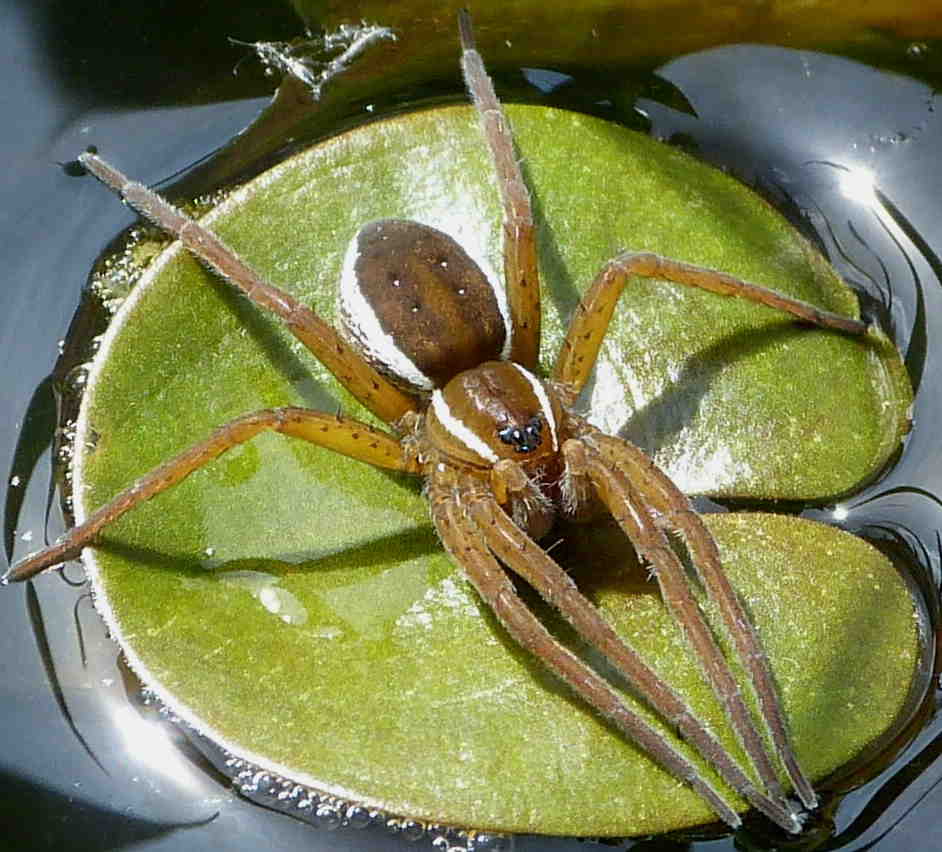Endangered and iconic species are an increasing focus of the important interface between art and science. Art in many forms, including words, images and performance, is often a powerful tool for conveying the beauty and fascination of the natural world to new audiences. This in turn can engender support for conservation. Because perceptions of spiders are so widely and negatively stereotyped, the overtly elegant and maternal Fen Raft Spider Dolomedes plantarius and its need for clean water rather than dusty corners, provides an enigmatic subject. The outcome is the poetry, prose and visual art described on this page.
Artist residency - Redgrave and Lopham Fen

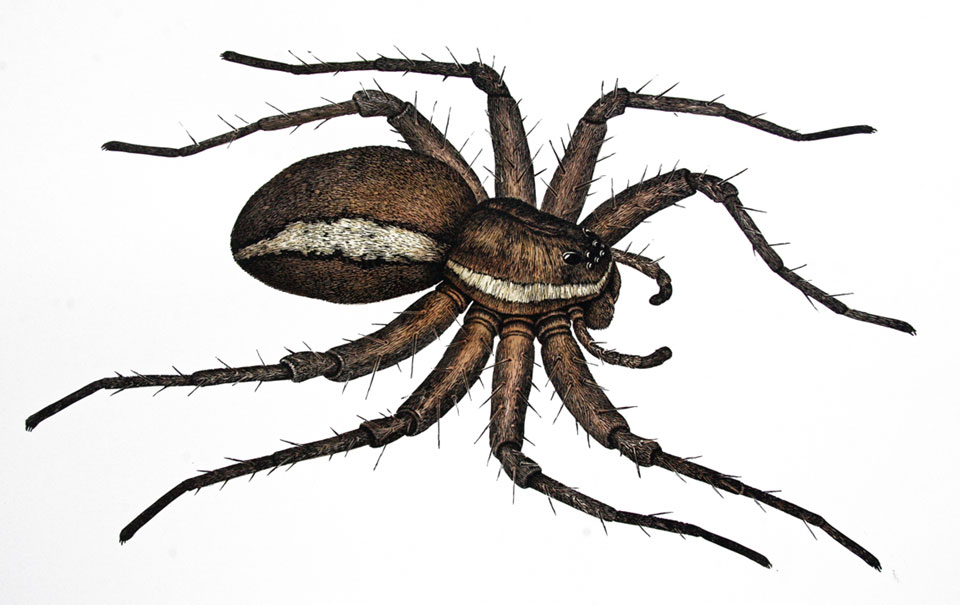
The Fen Raft Spider is almost certainly the only spider in the world to have had an artist residency devoted exclusively to it. Between 2009 and 2013, with support from Arts Council England, artist Sheila Tilmouth worked alongside the conservation project at Redgrave and Lopham Fen. She ran print-making workshops for groups normally unable to access wild places and creative opportunities, and produced a series of beautiful images documenting the Fen Raft Spider's biology, the threats it faces, and the conservation response.
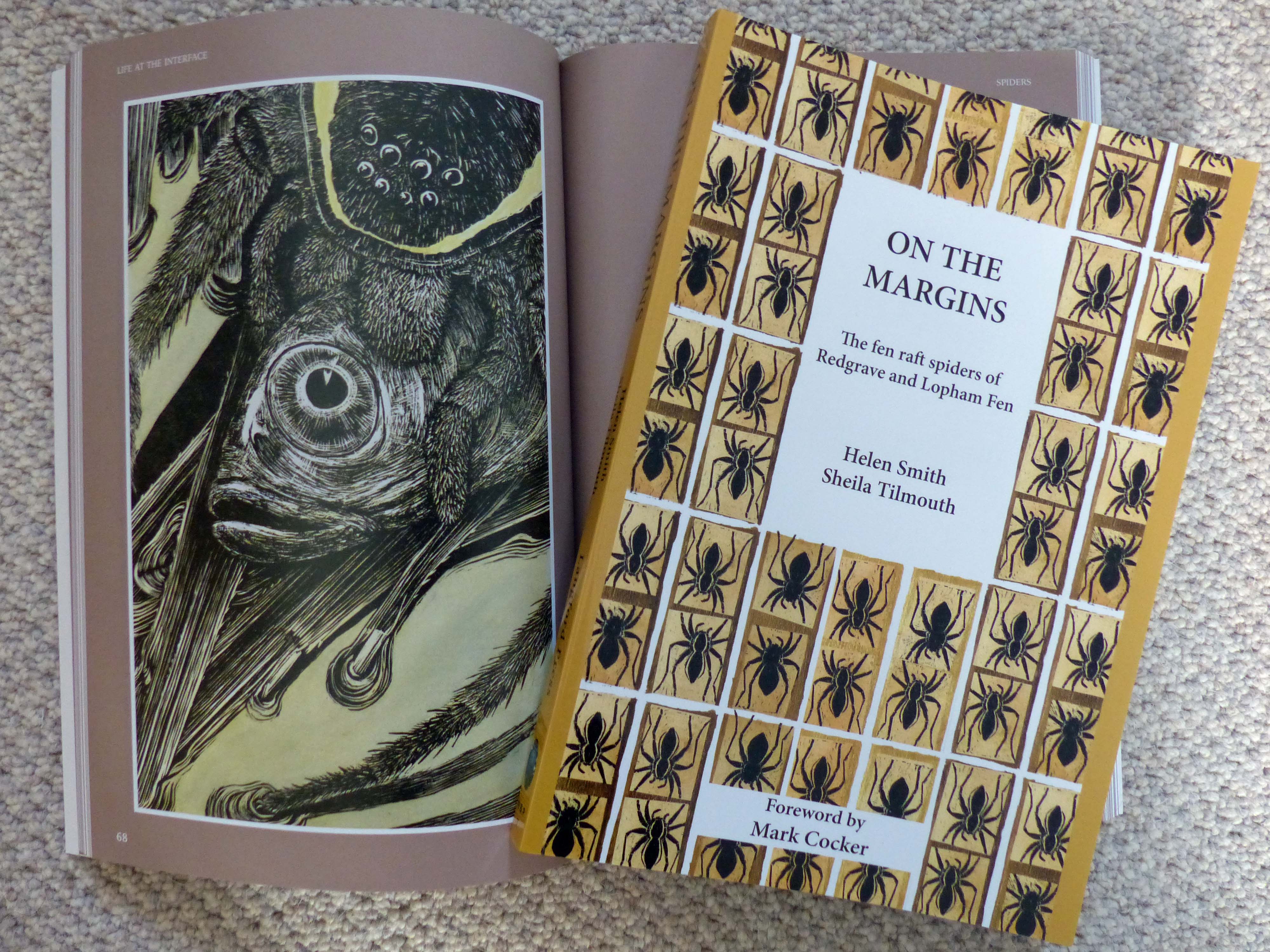
Her images formed a touring exhibition and are published in On the margins - the fen raft spiders of Redgrave & Lopham Fen. In the book, Sheila describes the inspiration behind her images as well as the techniques used to create them - from oil painting to collagraphy. Her images of the spiders are supported by her photographs of the Fen and its wildlife as well as by text by Helen Smith, which gives a personal insight into the spiders' lives and the long struggle to ensure their future. In his foreword to the book, Mark Cocker says 'spiders matter and this book makes the case perfectly'.
To see more of Sheila's wonderful Fen Raft Spider images or to buy them as prints visit her website.
On the margins - the fen raft spiders of Redgrave & Lopham Fen (Langford Press 2014) - can be purchased from the British Arachnological Society to benefit Britain's many endangered spider species (£9.50 inc. P&P).
Poetry and prose
26 Wild: The Story's Not Over
In 2020, partnering with The Wildlife Trusts, the writer's group 26 drew attention to the plight of some of our most threatened species. Fifty-six writers were paired with 56 endangered species (52 from the UK) to explore their disappearance and potential recovery, collaborating with the scientists and conservationists who work to conserve them. Each wrote a centena (100 words exactly, with the first three words repeated as the last three) as well as a short essay about the species' plight. Katie Greening wrote about the Fen Raft Spider. Composed during the spring Covid-19 lockdown. Unable to visit her own mother, the spider's strong maternal behaviour particularly resonated with her. This is reflected in her work which you can read here. The full set of contributions can be seen here and are published in a book 26 Wild: the story's not over. Profits from the book will support the work of the Wildlife Trusts.
Works by two East Anglian poets:
Caroline Gill's poem Raft Race was overall winner of the Zoological Society of London's 2014 poetry competition:
What causes us to go on standing by
when we could save a species with eight feet?
Our fenland spider pools could soon be dry.
We leave the work to scientists, who try
to buck the trend, conserving tracts of peat:
what causes us to go on standing by?
Statistics show a grim reality
as habitats decline in rising heat:
our fenland spider pools could soon be dry.
New rescue rafts are launched, but some will shy
away from volunteering for the fleet:
what causes us to go on standing by?
The time has come to jump aboard, defy
the urge to settle for a ringside seat:
our fenland spider pools could soon be dry.
The female bears her bundle to the sky
on strands of sedge, as air and water meet.
What causes us to go on standing by?
Our fenland spider pools could soon be dry.
© Caroline Gill 2014
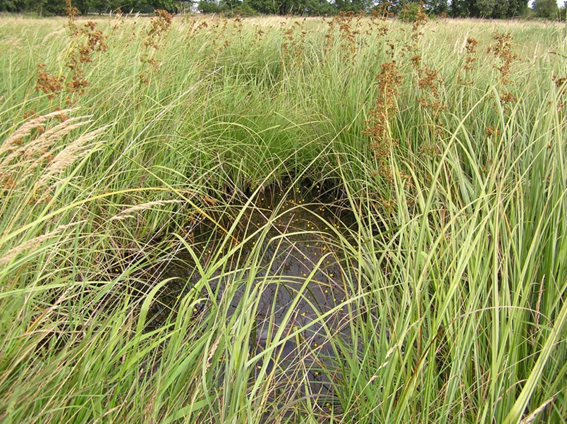

Matt Howard, reflects a different aspect of the spider's story in his poem Fen raft spider, first published at wildcourt.co.uk and reproduced here with his permission.
Fen raft spider
Let us venerate niche and otherness,
local, patch-level occurrence –
take the fen raft spider’s
each simple eye, each leg hair sensing
the water’s tension. All his
drawn out care, a display of front legs
in arcs across the meniscus, that moving
slenderness, stop-start, from side to side.
She watches while he grooms.
Now receptive, they bob slowly.
And his front legs flicker,
vibrating all over her abdomen.
She draws herself in so he can roll them
on her back into their rippling.
© Matt Howard
